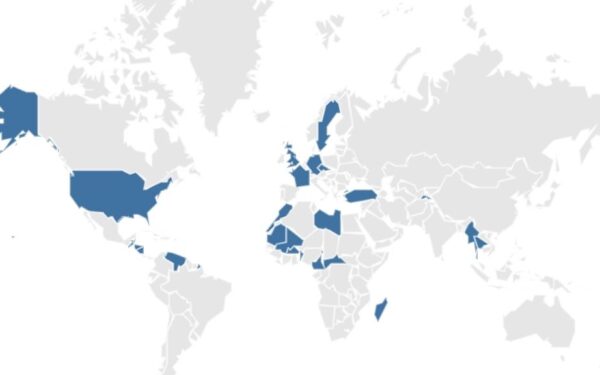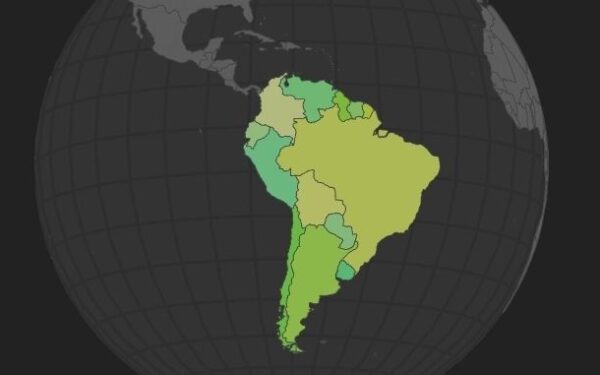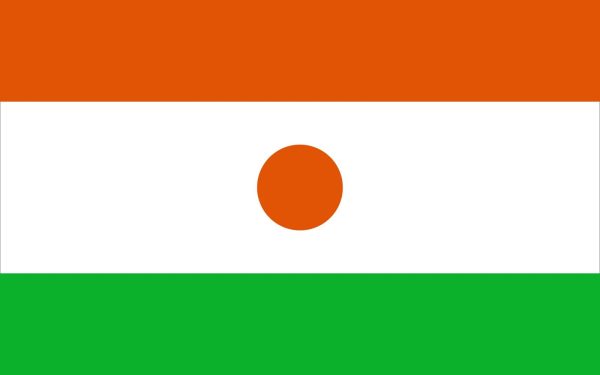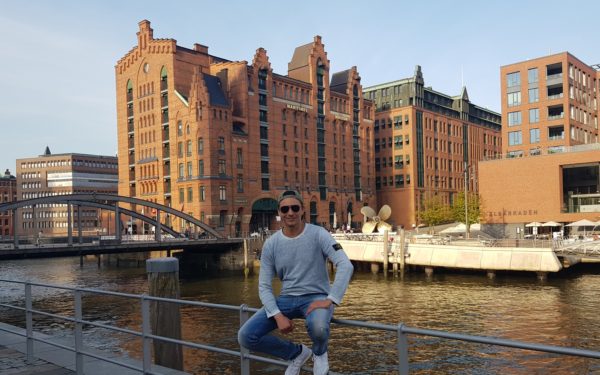Travel report: Pakistan
Country ranking by area: #35
Country ranking by population: #5
Date of visit: September 2018
“Pakistan? It’s like India. But even worse!” – a colleague at work.
After an exhausting trip to India in 2015, I decided to return to the Indian Subcontinent three years later. Pakistan should become my second country on the Subcontinent.
The story began eight weeks before the trip. Getting a visa for Pakistan is actually quite easy. It should be like that in theory at least. But it wasn’t. Check out this article if you want to hear the story about the most stressful hunt for a visa ever. The story includes 35 unanswered phone calls to the embassy, two trips to the embassy, a lost passport and a corrupt embassy employee.
Pakistan: facts and figures
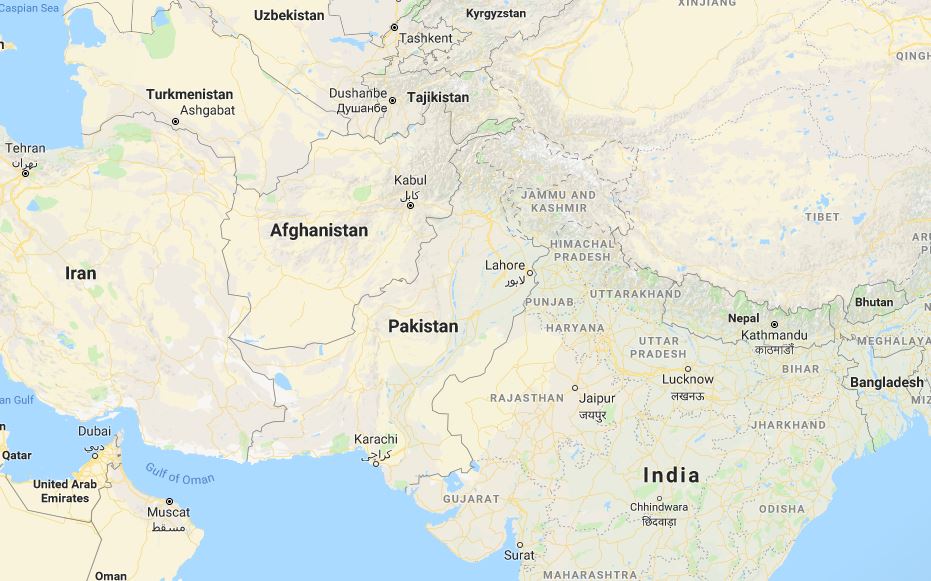
Before I start with the travel report, I hereby give you a few facts about Pakistan:
- The name Pakistan means “Land of the Pure”. Pak means pure in Urdu, stan is land in Persian.
- The country was founded in 1947 after a separation from India.
- Pakistan is part of the Indian Subcontinent together with India, Bangladesh, Sri Lanka and the Maldives.
- 209 million people live in Pakistan. That makes the country the fifth-most populous in the world. India is the second-most populous country (1.3 billion people) and Bangladesh is number 8 with 163 million people. That means that almost a quarter of the world’s population (1.7 million) lives on the Indian Subcontinent.
- Pakistan’s capital city is Islamabad.
- Benazir Bhutto was the former president of the country. She was the first female president in a Muslim country.
- 96.3% of the Pakistani are Muslims. The country is characterized by religious intolerance. Attacks against Hindus and Christians are not unusual.
- The Swiss Federal Department of Foreign Affairs (EDA) advises against all unnecessary travel to Pakistan, which is a bit absurd in my opinion. But my roadto197-project makes it necessary, I guess…
Arrival in Lahore
The policeman at the immigration desk looks into my passport and says “you look like Pakistani!” I laugh and say “I already heard that from the Indians.” He waves me into his country and adds “welcome to Pakistan”. Once again I realize that I could be from almost every country in the world but not from Switzerland, as they usually speak in English to me at Zurich airport.
So, there I was. I just set foot into my country #76. It was 5 AM in the morning and it doesn’t take long until a taxi driver approaches me. “Taxi?” – “how much?” – “1,200 Rupees!” – “no thanks!” I have no idea if 1,200 is a fair price or not, but it’s always a good idea to refuse the first offer. “Okay, 1,000 Rupees,” says the taxi driver. “Alright.” I later find out that 1,000 Rupees (= 8 USD) is the regular price for a ride from the airport to the center.
Another Pakistani, who works for the taxi company, takes my luggage. Pro tip: never give your luggage to others unless you want to pay a price afterwards. I told the guy three times that he doesn’t need to carry my stuff but he didn’t listen. Therefore, I am not sorry to disappoint him. “I am the porter. Can you give me a tip?” – “no.” – “Come on, just five Euros.” Yeah sure, that’s probably the salary for a full day of work in Pakistan. I don’t answer his begging and enter the taxi.
Although we have agreed on 1,000 Rupees for the trip, the taxi driver asks me to pay the airport fee. He says it costs 100 Rupees, but I can see that he puts the change of about 60-70 Rupees into his pocket. He has no idea where my hotel is by the way. The taxi stops somewhere in the city, the driver points at a building and asks “hotel?”. “No,” I say, as the building has no hotel sign on it. At least he tried.
Fortunately, we find the hotel after ten more minutes. Before I give the driver the money, I take my luggage from the trunk, and give him 900 Rupees then. The driver protests, but I tell him that we had agreed on 1,000 and that I already gave him 100. He keeps annoying me. Not the best idea, as I am terribly tired. I just think ‘fuck off’, and I’m actually close to say these words out loud, especially when the driver keeps harassing me in the hotel lobby while I do the check-in. The guy at the reception of the hotel then says what I think and the taxi driver leaves.
It’s almost 6 AM and I fall asleep, although the A/C makes a horrible noise. But I’m simply too tired to hear the noise longer than five minutes.
Good morning Pakistan
It was a good idea that I told my tour guide that I wanted to start the tour after noon, as I needed the sleep after my red-eye flight. In hindsight, it was generally a good idea that I organized a tour guide, because exploring Lahore by myself would have been a very exhausting experience. Lahore was already exhausting with a guide, but I cannot imagine how it would have been without him.
I had one hour to explore my surroundings before my guide arrived. My first impressions of Lahore were that it was very similar to Delhi in India. The traffic is incredible, as the streets are full of motorbikes, tuktuks and cars. It’s a challenge to cross the road. Moreover, the streets have a bad smell, it’s dirty, polluted, hot and humid. Although I just came from the even hotter Kuwait, I struggle with the heat. Kuwait was dry at least, but it’s a different story in Lahore.
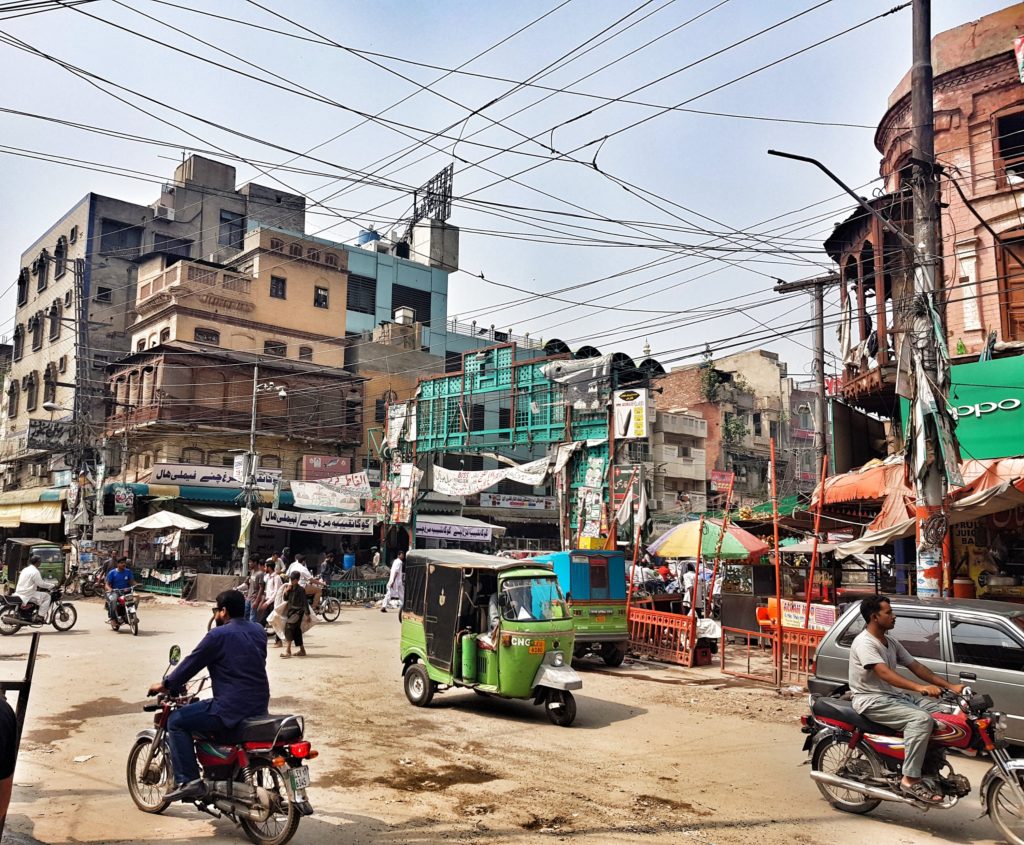
“Are you Pakistani?” asks a guy while I wait in front of my hotel. I say no. “Good, you must be Nicolai. I’m Sajjad, your tour guide!” He is four or five years older than me and he looks likeable. Two weeks before, I asked another tour guide from Pakistan if he could provide a guide for two days in Lahore. I also told him what I wanted to do. His answer was: since you are on a tight budget we will charge you 150$ for transport and guide. Again, this is probably a month’s salary in Pakistan. Therefore, my reaction was: I paid 60$ for a two day tour in Delhi for transport and guide. Sorry, I’m out!
The deal wasn’t off though. Of course, my contact knew “another” guide who could do it for 100$ or even less by giving a discount. Eventually, we agreed to 85$. That’s almost half of the original price and I don’t know if they didn’t go lower if I kept negotiating. But 85$ was totally fine. It also turned out that my guide Sajjad was the guy who runs Lahore Backpackers, the most famous hostel in Pakistan.
Exploring Lahore: the street dentist
We don’t have an air-conditioned car but do the sightseeing tour with tuktuks. This isn’t a problem for me, it’s quite fun to be honest. Our first stop is the street dentist. I have seen something on YouTube before, but I think the video I watched was taken in Jaipur (India). Street doctors are not only an Indian thing apparently.
The dentist is treating a patient when we arrive. His office is actually just a bench next to the street. Sajjad, my tour guide, asks me to sit next to the dentist and to take photos. I have the feeling that Sajjad enjoys this procedure more than I do. He gives the dentist some money from time to time, however, I am not sure if the patient feels 100% comfortable when two people watch how the dentist puts rusty tools into his mouth.
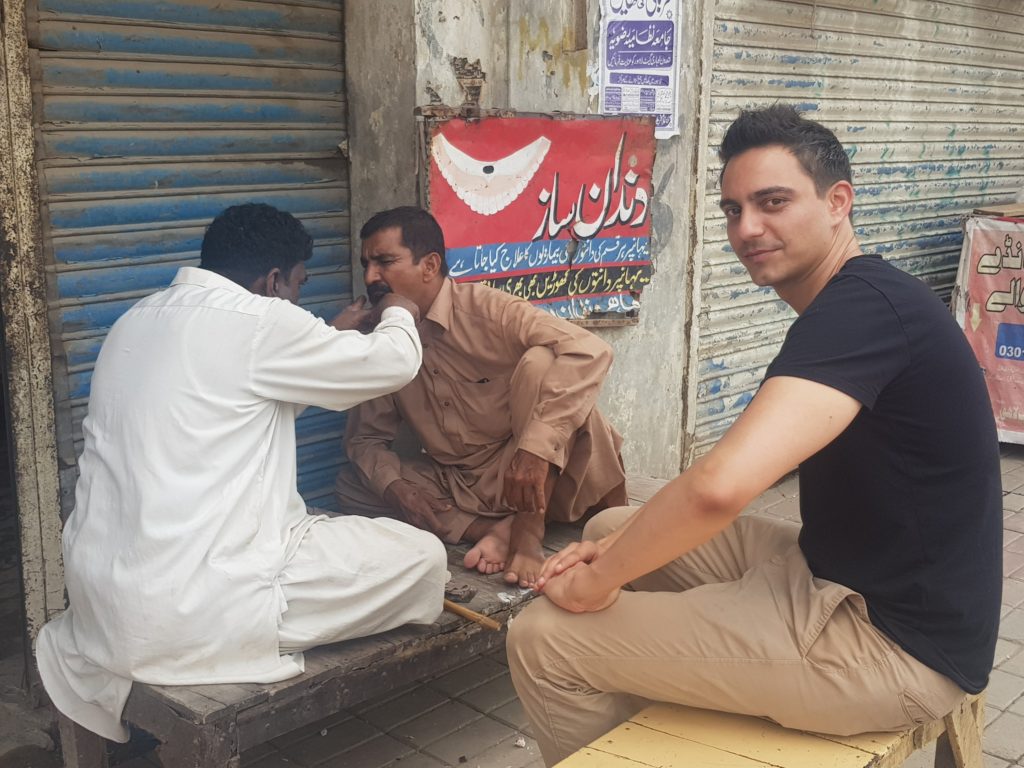
The hygiene standard is incredibly low. The tools look dirty and flies circle around the dentist’s and the patient’s head. The poorest of the poor come to this place. The guy who sits in front of me pays 30 Dollars for 18 new teeth. His new teeth are not artificial but old teeth from other humans. “The dentist also uses teeth from goats sometimes. Or gold teeth.” Sajjad tells me that he hopes that the dentist will put a gold tooth into the patient’s mouth. It doesn’t happen.
The real problem here are the diseases. Hepatitis and other diseases easily transmit from patient to patient. The street dentist doesn’t clean his hands with water and soap but on his clothes before treating the next patient. He is not even a real dentist by the way. He doesn’t have a degree in medicine. But he is the last hope of many people with tooth problems in Lahore. Sad but true.
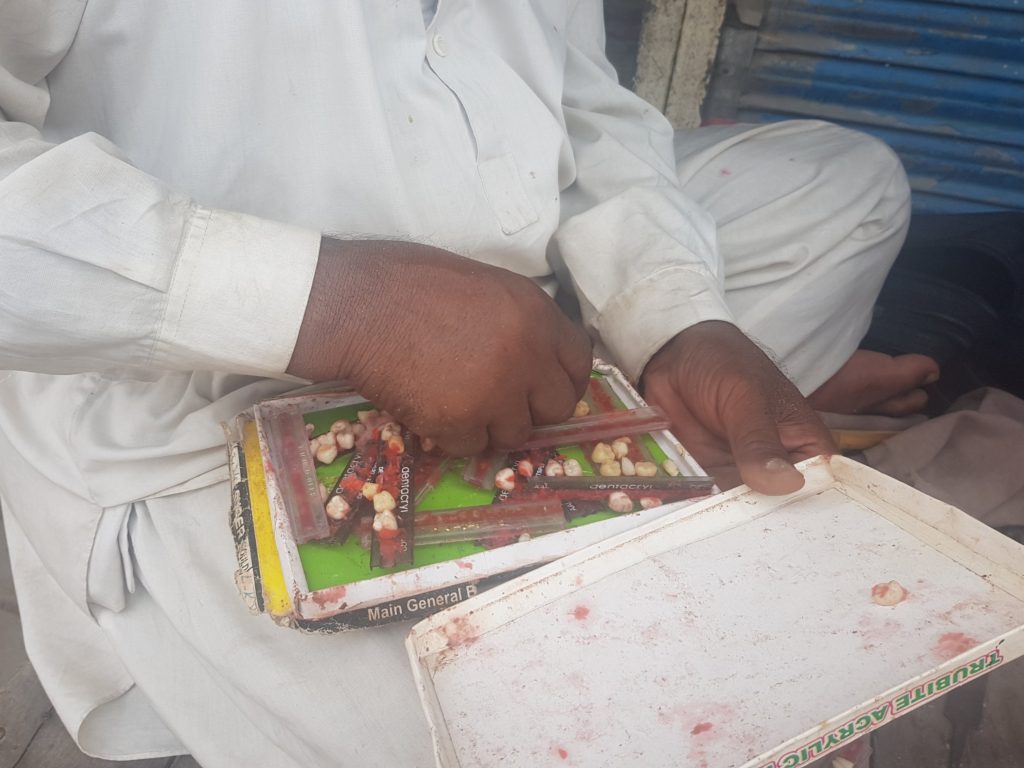
We see also the street medicine man and the street ear-cleaner just a few meters away. Not as spectacular as the street dentist, but anyway, I have never seen people pay someone to clean their ears on the street.
Sightseeing in Pakistan
Lahore is actually a quite interesting city for sightseeing. We started with the most famous landmark, the Badshahi Mosque. This Mughal era mosque is similar to Jama Masjid in Delhi… no surprise, as Badshadi Mosque was built by Aurangzeb, the sixth Mughal emperor, who was actually the son of Shah Jahan, the fifth Mughal emperor, who built Jama Masjid. But enough with the history lesson.
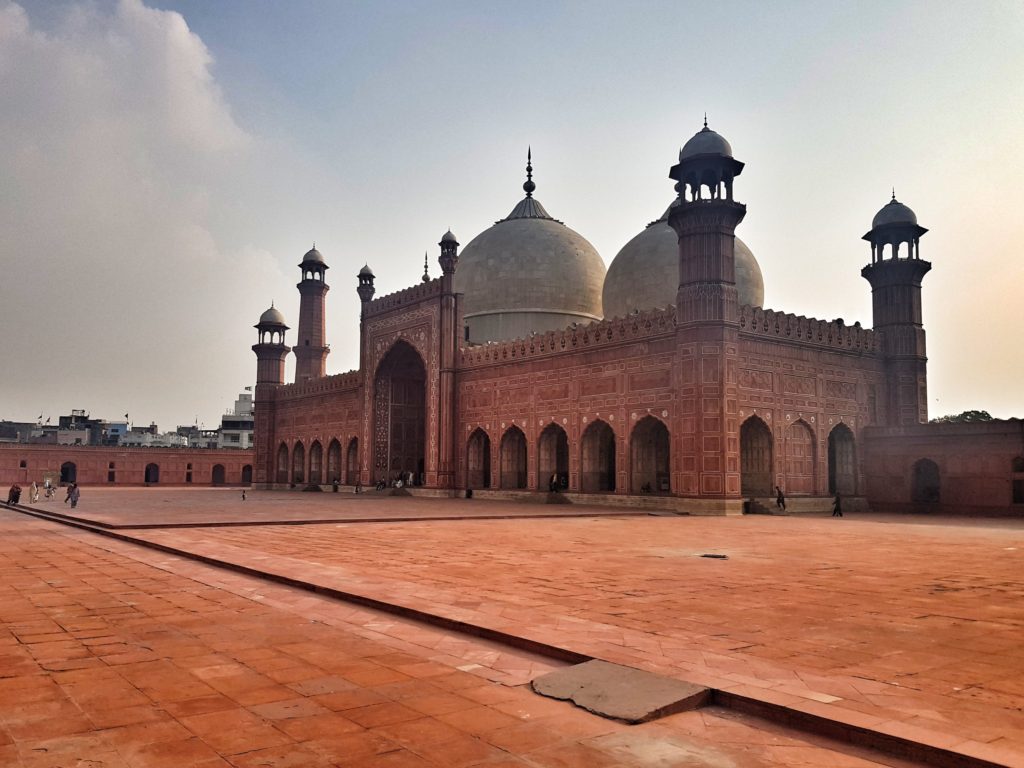
It’s already late afternoon and the mosque they aren’t many people in the mosque (contrary to the completely overrun Jama Masjid in Delhi). Some people sleep in the shadows and wait for the next praying time, other people stroll around. I also see a few tourists. That didn’t happen often during the whole trip in Pakistan.
Lahore Fort is our second stop. It’s right next to Badshahi Mosque and the second most important landmark. To be honest, I have seen so many forts in India that I’m not impressed with other forts anymore. The fort was nice, but I wouldn’t have been sad if I didn’t see it. We continue our tour to Old Lahore, a quarter with many narrow streets and stalls. It’s a bit like a maze. And good for taking pictures. Wazir Khan Mosque is another sight we visit. It’s located in (or near) Old Lahore. It’s a beautiful mosque with a nice yard.
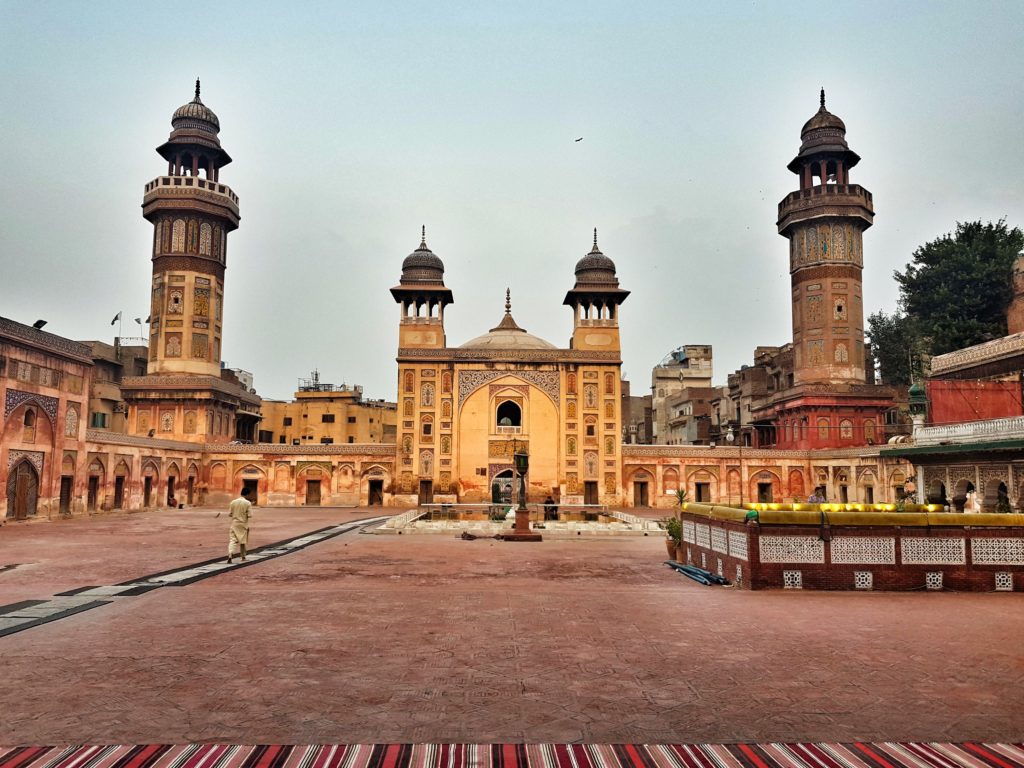
We use a carriage to leave the area. The narrow streets of Lahore are unsurprisingly full of people, motorbikes, cars, horses and carriages, and it takes an eternity to move forward. The horse almost collides with a car – twice! It looks like this ride makes only me nervous but not Sajjad or the driver of the carriage.
At the end of the day, Sajjad takes me to one of the fanciest restaurants in Lahore. It’s the first restaurant when you enter the so called Food Street, which is located next to Badshahi Mosque. Some of the restaurants have rooftop terraces, which provide an amazing view over the mosque. I am starving, as I didn’t eat the whole day, and it’s almost 7 PM.
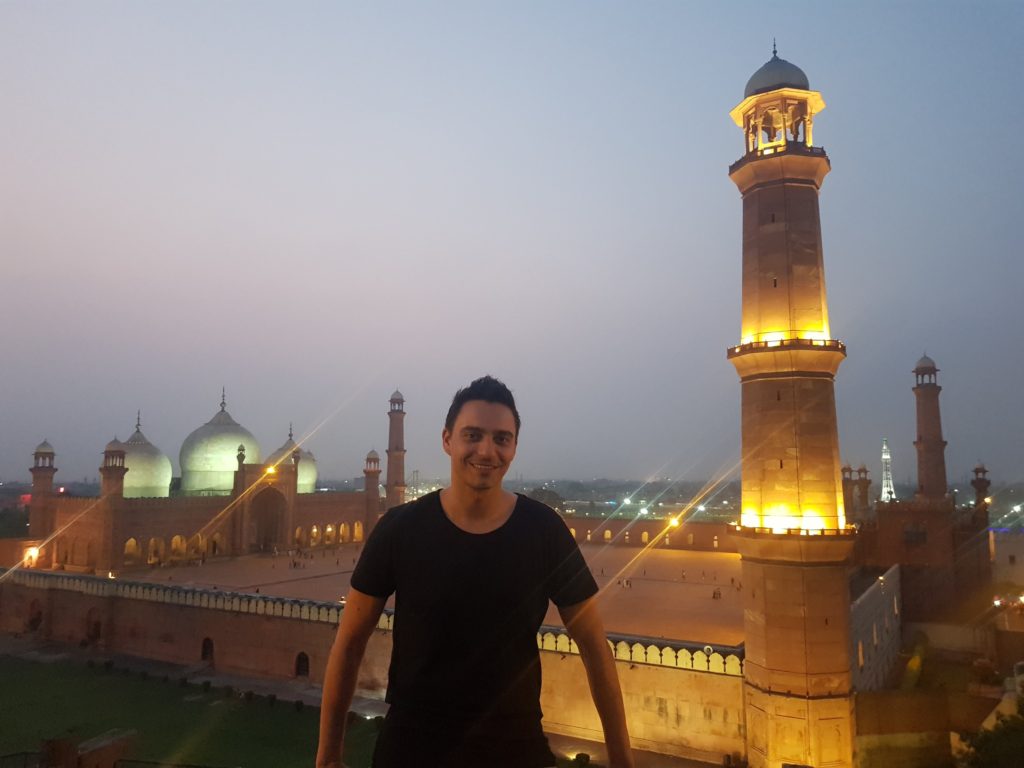
I have no idea what to order, but Sajjad suggests that we take a plate that has rice with different kinds of meat. The plate costs 24 Dollars. That is a lot in Pakistan, but it looks like they put almost a kilo of lamb, chicken and beef on the plate. We eat the meat with delicious rice and yogurt with mint. It’s a fantastic meal. Unfortunately, it’s way too much for both of us, but Sajjad takes the rest into his hostel.
I look around and see some couples in the restaurants. Many women in Pakistan wear burkas, but this restaurant seems to be a place for the upper middle-class. A young couple behind me gives me a piece of cake as a present. They celebrate a birthday (either his or hers). What a nice gesture. “Sajjad, how do you meet girls in Pakistan?” I ask my guide. “Do you need a girl for tonight? I can arrange it.” he replies. “No, I mean, how do men and women get to know each other in Pakistan? Is it the social circle?” – “Most of the marriages are arranged between families.” – “Okay, I understand…”
Sajjad takes me to his hostel after the meal where I meet some interesting people. A Canadian, probably ten years older than me, is on the road for six years and has visited 171 countries. He is kind of a hero to me. Other travelers I meet are from Japan, China, Germany and Sweden. All of them are people who have been to a lot of rather unknown destinations. I love it. Sajjad later drives me back to my hotel. I am completely exhausted after my first day in Pakistan.
Day two in Lahore
Pakistan is three hours ahead of Central European Time, and as my whole trip through the Middle East and Central/South Asia is only for 9 days, I never adjusted to the new time zone. Plus I had two red-eye flights the two nights before. That’s why it’s no surprise that I don’t hear the alarm clock at 7 AM, which would be 4 AM in Switzerland. I wake up exactly at 9.30 AM. It’s the time I should meet Sajjad in the lobby. I tell him that I need 30 more minutes.
We have a car this time, because we leave the town in the afternoon to visit the Wagah Border flag lowering ceremony. But first, we continue our sightseeing tour. I think Sajjad noticed that I was a bit disappointed because the sun ruined the quality of the picture I took from the Badshahi Mosque so that we revisit the attraction again this morning.
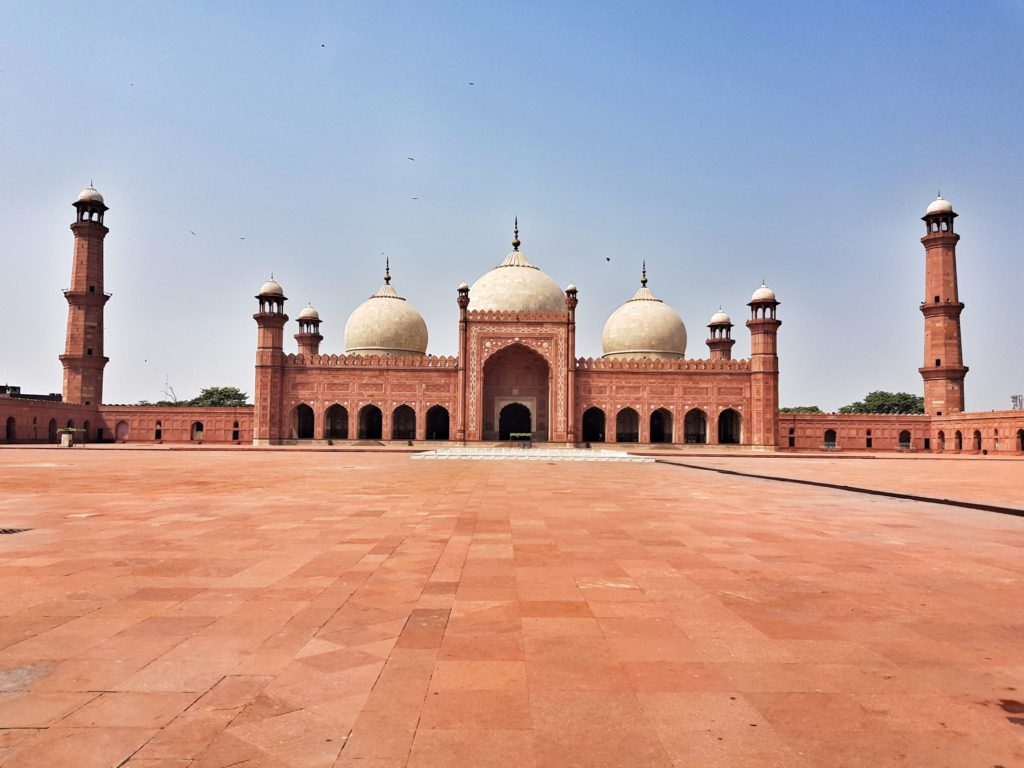
There are even less people in the mosque than the day before, and I can take as many pictures as I want without people in front of the mosque. Although I have been asked a few times if I’m Pakistani, most of the people notice that I’m a foreigner because of my clothes. Three young Pakistani shyly ask me if they can take a picture with me in front of the mosque. They say that they are from Karachi but live in Dubai. We take a few pictures together and they thank me for “the honor”.
Taking selfies continues during breakfast. I actually dare to eat street food and the chickpea paste with bread is absolutely delicious. The people are incredibly kind, they offer me the best seat, and ask for pictures after the meal. All the Pakistani, not only the ones at this food stall, were very kind to me. Every time we arrived somewhere, I was offered something to drink. A man even felt insulted, because I asked for water only and not a juice. He assumed that I was thinking that he couldn’t afford to offer me a more expensive beverage.
We continue the tour to the truck garage. Pakistan is famous for its beautiful, colorful trucks, and it’s in fact pretty expensive to get these trucks painted. We are talking about a few thousand Dollars if you want to paint your truck. Sajjad shows me how they work on the cabin. At least, it looks that they take safety a bit more seriously than the welder I saw the day before welding something without glasses or any other face protection.
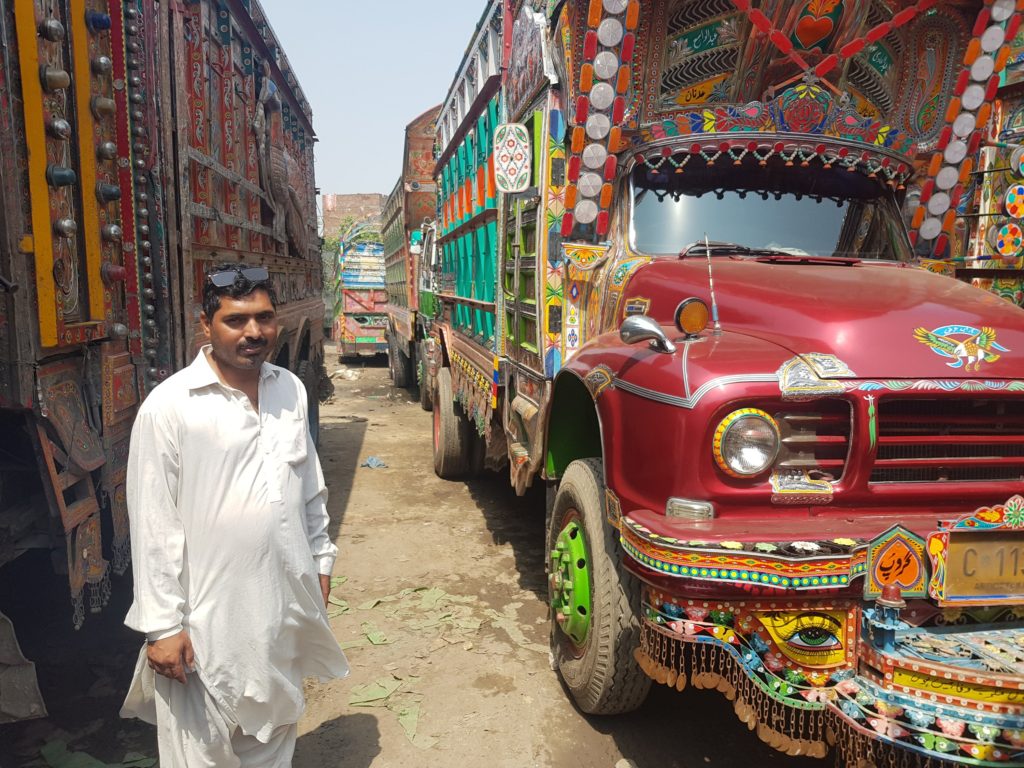
The weird Wagah border ceremony
One of the main reasons why I chose Lahore and not Karachi or Islamabad as my destination in Pakistan was the Wagah border ceremony. I have seen videos of this weird ceremony on Youtube and wanted to see it by myself. Pakistan and India have not the best relationship. Pakistan separated from India in 1947. Since then, tensions are high between the countries, and war breaks out sometimes. The fact that both countries are nuclear powers doesn’t make things easier.
The Wagah border ceremony is a patriotic military show, which is held simultaneously on both sides. Both countries didn’t even stop during the last clashes in 2009. The ceremony takes places every evening of the year, and thousands of people are cheering for their country. The Indian side is actually a lot bigger – I would guess three times bigger – than the Pakistani side.
I couldn’t exactly see what was happening during the pre-show on the Indian side, but it looked like dozens of Indian children were running around with Indian flags. The Pakistani pre-show is more warlike. A fat man with long beard heats up the crowd and wild dances take place in the middle of the road. The most memorable dancer is a one-legged man who occasionally lifts his crutch and threateningly waves it towards the Indian side. The crowd shouts “Allahu akbar” or “Pakistan – Zindabad!” (= long live Pakistan).
We are sitting in the first row and I paid 10 Dollars for the VIP ticket, however, I am not sure if that wasn’t a rip-off, because another tourist from Lahore Backpackers didn’t pay anything. “Are you Chinese?” asks a young Pakistani behind me. “No,” I answer. “Is your friend Chinese?” He means the other tourist. “Yes, she is.” – “Good. Thank you for sitting on the Pakistani side. This is a very emotional ceremony for us.” You can really see how emotional this thing is. Thousands of people wave little Pakistan flags. I bought one too.
The heat reaches the maximum when the soldiers appear and march towards the Indian side. The same thing happens on the other side. What makes the show memorable is how the soldiers raise their legs. It’s looks impressive and also ridiculous. Like the whole show.
Both sides send his threats and curses to the other side, and the crowd goes bananas. The whole procedure finishes after one hour, when they open the door between the border, lower the flag and shut the door down again. After that, all the people go home. Happily.
Road to Islamabad
The next morning, I head to Islamabad, the capital city of Pakistan. I originally wanted to visit Rohtas Fort between Lahore and Islamabad so that I booked a private driver for the ride. I later decide against stopping at Rohtas Fort, because I don’t want to see another fort. Hiring a private driver becomes completely unnecessary in the end (I could have taken the bus for 5 Dollars instead of paying 100 Dollars for the private driver). Anyway, I tell Sajjad that I would like to see Islamabad a bit, and we include a drive up to the hills around Islamabad to the trip.
The driver is the same one I had the day before. I would say that he is 50 years old, a kind man whose English is very basic. During the four hour ride, we listen to wild Indian music that is apparently used in Bollywood films and my driver says “Allahu akbar” from time to time. Every time we drive into a new city the driver tells me the name of it, and as soon as we leave the city, the driver says that the city ends here (which is quite obvious due to a street sign with the crossed out name of the city). The scenery is not spectacular, but it gets greener as closer as we get to Islamabad. I tell my driver that it looks a bit like Switzerland, which makes him happy.
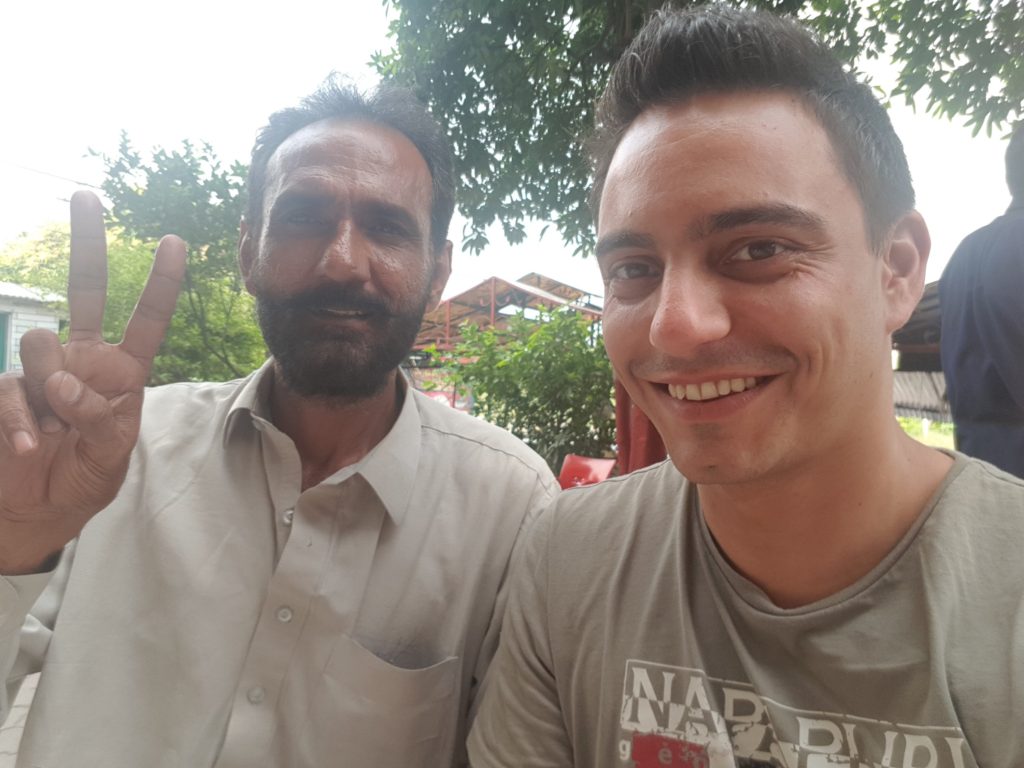
We arrive in Islamabad in the late afternoon. I didn’t see a lot of Pakistan’s capital, but the city looked actually pretty nice. There are many green spaces and trees in the cities. I didn’t see that a lot in Lahore. Nevertheless, people say that Islamabad is a rather boring city with little street life and few attractions. Shah Faisal Mosque is Islamabad’s biggest attraction, it’s the fourth largest mosque in the world. We passed by the mosque, not a beautiful one in my opinion, but a gigantic one.
The last stop before my driver drops me at my hotel is Monal restaurant. This restaurant is located in the hills above Islamabad. It’s a fancy restaurant for rich people and diplomats I guess. The view over Islamabad is very nice, however, the fog ruins it a little bit. It’s also cooler here, as Islamabad is 1,800 meters above sea level.
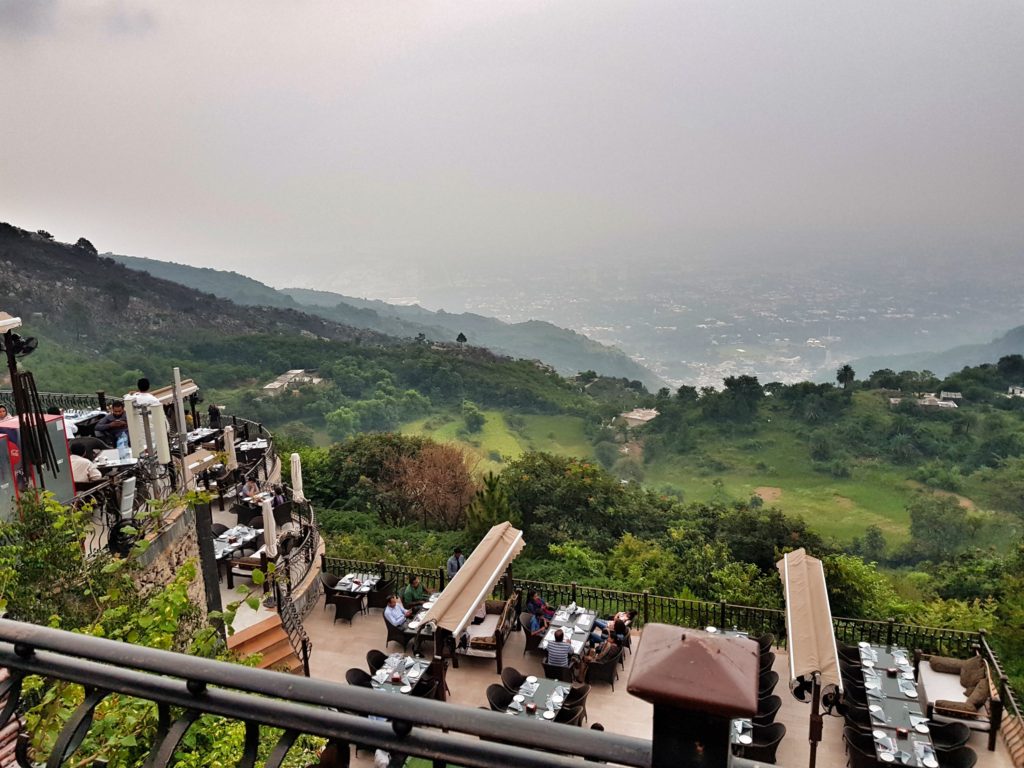
As I have a flight the next morning, I booked the hotel in Rawalpindi, the sister city of Islamabad, because the airport is located there. When I try to enter the hotel, a guard with a rifle approaches me and yells “hey!”. I didn’t use the right entrance, but come on, couldn’t he just tell me that in a more subtle way? The hotel is cheap but more comfortable that the one I had in Lahore.
It is already 11 PM, when I coincidentally find out that the airport next to my hotel is not in use anymore and the international airport is about an hour ride away. Damn. But in my defense, Google also finds the airport in Rawalpindi when you search for ‘Islamabad International Airport’.
My travel experience in Pakistan
Pakistan was together with Georgia my biggest travel surprise in 2018. Maybe even the bigger one than Georgia. I knew that Pakistan would be stressful and exhausting, but I didn’t expected the country to be so fun. What I liked about Pakistan were the strange things I witnessed (street dentist, Wagah Border ceremony…), the kind people, the food, my amazing tour guide Sajjad and also the interesting people I met at Lahore Backpackers. As you can imagine, you won’t find the average tourists in countries like Pakistan.
I expected Pakistan to be like India in almost every aspect, but I was wrong. Of course, cities like Lahore (and also Karachi or Peshawar, I guess) look not completely different from Indian cities, but there are differences. The food for example. You will find plenty of beef in Pakistan but not in India. Pork is hard to find in both countries. It’s not the only difference regarding the cuisine. I also didn’t see the kind of poverty in Pakistan that I saw in India. There are obviously also beggars, but India was worse. Way worse. Plus I didn’t see many stray animals in Pakistan while India is full of it.
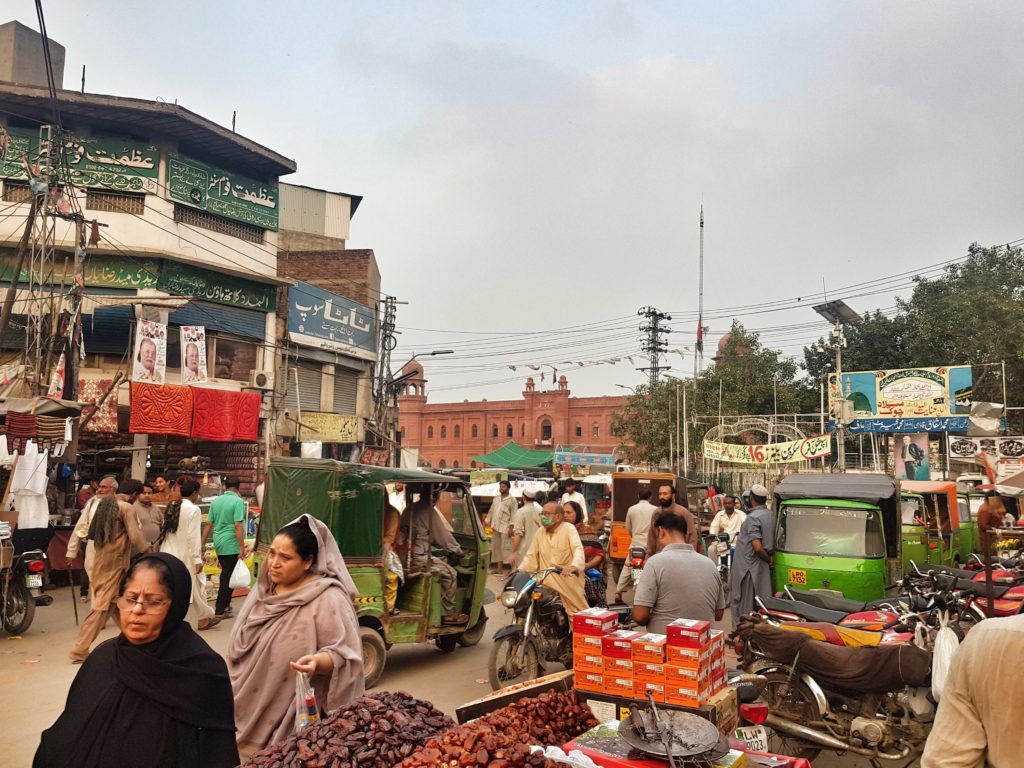
One of the most common questions I got asked was if Pakistan is a safe country to travel. Pakistan is generally safe, but there are certain areas (e.g. Balochistan, the largest province of the country, which is about 45% of the country’s size), in which special precaution is necessary. Lahore and Islamabad are considered safe though. Nevertheless, suicide bombings occur from time to time, but chances that you as a tourist will be affected by that are practically zero. I experienced Pakistan as a country with very kind and hospitable people. It’s sad that a few thousand Taliban ruin the reputation of a country with more than 200 million inhabitants.
Will I revisit Pakistan? It’s hard to say. I think I don’t need to go back to Lahore or Islamabad, but as all the other travelers I met in Lahore enthused about the North of Pakistan, I might give it a try someday. Or I will go to Karachi. A friend of mine says that Karachi in the South of the country is one of the worst cities in the world. Sentences like that make a city tempting to me. It’s the biggest city of the country (and one of the 10 biggest in the world). “It’s dirty. I mean REALLY dirty! If you think that Lahore is dirty, you have no idea!” said another traveler at Lahore Backpackers.
I had fun in Pakistan, but I think it’s because I only stayed a short amount of time. Like the other mainland countries on the Indian Subcontinent, Pakistan is tiring and not easy to travel. To comment on my colleague’s remark that I mentioned in the beginning (“Pakistan is like India but even worse”): if you don’t like India, you will most probably dislike Pakistan as well. Therefore, I think that Pakistan is not a country for everyone. It’s rather a destination for the seasoned traveler and not for beginners.
Epilogue: Kabul Calling…
It’s 7 AM and an Uber is driving me towards Islamabad International Airport – the right one, not the closed airport in Rawalpindi. The driver looks like a Taliban. You know, long beard, turban etc. He is nice though, and we start chatting. He asks what my next destination is. I am heading to Kabul, but I think it’s better to keep that as a secret. Not everybody needs to know that. “I’m going to Istanbul.”
Our route already took 50 minutes and a street sign says that we still have 7 KM to the airport. However, our car gets stopped at a military checkpoint. A soldier starts talking to the driver. “He wants to go to the airport as well. Can he come in?” the driver asks me. Well, do I have a choice? I say “sure, no problem.”
Five minutes later, we arrive at the next checkpoint. “Do you have a non-stop flight to Istanbul?” the driver asks. I can see how the soldiers search the car in front of us. Now I think that it could be a bad idea when I lie and have to show my flight ticket afterwards. “No, I’m going to Kabul first.” The driver looks at me. He seems to be shocked. We drive to the soldier and my driver speaks to him. I can hear that he speaks out the word “Kabul”. The soldier looks into the car. He looks at me, then he looks at the soldier in the back (who is on the phone since he entered the car) and waves us through.
“Woah… I think I am lucky that a soldier is with us!” The driver agrees and says that they would have searched the whole car if there wasn’t a soldier on the back seat. “Normal people don’t fly from Islamabad to Kabul,” the driver adds. Two minutes later, we arrive at the next checkpoint. I haven’t seen such a heavily protected airport in my life yet (but I will two days later when I depart from Kabul). The same procedure happens at this checkpoint, as the soldier waves us through as soon as he sees the soldier in the back.
I arrive safely at the airport, and the biggest adventure of my life begins…
Find the travel reports of the other countries I’ve visited here!
